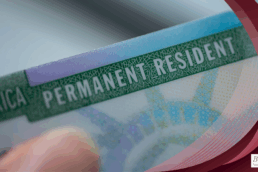In November 2020, Utah became the first state to allow virtual Zoom weddings for long-distance couples seeking to get married. This option is especially salient to cross-border couples who have been separated for the past year and a half due to the COVID-19 travel restrictions. Utah’s marriage option is considered a proxy marriage and allows for virtual marriages without a residency requirement. A proxy marriage occurs where one or both of the marrying couple are not physically present at the wedding ceremony. Due to the chaotic COVID-19 travel restrictions and requirements, many cross-border couples have looked into this option to get married and jump start their immigration process throughout the COVID-19 pandemic.
Under the Immigration and Nationality Act (INA), the terms “spouse”, “wife”, or “husband” do not include a spouse, wife, or husband by reason of any marriage ceremony where the contracting parties thereto are not physically present in the presence of each other, unless the marriage shall have been consummated. 8 U.S.C. §1101(a)(35). Accordingly, proxy marriages are recognized under the INA, but two requirements must be met:
- The marriage must be valid under the law of the jurisdiction in which it is performed; and
- The couple (married by proxy) must consummate the relationship, which would require both spouses to be physically together after the marriage by proxy.
Because Utah has announced that it will recognize weddings conducted over zoom, the real issue for interested cross-border couples is step two: consummation of the marriage. This rather outdated requirement under the INA complicates the main objective of a zoom wedding, as it does require the couple to meet in person. While the law is silent as to whether the consummation must occur inside or outside of the U.S., the travel bans worldwide have made it difficult for couples to meet in the same location. They would have to find a location that allows both Americans and foreign nationals to enter unrestricted. What is even more uncomfortable, is that the couple would need to prepare an affidavit stating the date and location of the subsequent consummation.
Although COVID-19 travel restrictions are set to be lifted for 33 countries, including China, Brazil, and a majority of Europe in early November, there is another hurdle that a foreign national spouse would have to overcome in order to join their new spouse in the U.S. – specifically, proving proper intent upon entry. For instance, if the foreign national who was virtually married by the state of Utah purchased a one-way ticket to the U.S. to visit his/her U.S. citizen spouse then – rather than wait the lengthy processing times to receive a marriage based green card – it is likely that he/she will be refused by U.S. Customs and Border Protection (CBP). This is because a spouse of a U.S. citizen is considered an intending immigrant due to their substantial tie to the U.S. (namely, the U.S. spouse) and would therefore not be admitted as a visitor to the U.S.
As you can see, marrying virtually for U.S. immigration purposes isn’t the quick and easy solution it appears to be. There are several landmines involved in this process and couples who pursue this route should carefully plan every step and consult with an experienced immigration lawyer to ensure they are in lawful compliance with U.S. immigration laws along the way.
For more information about Utah’s virtual marriage option, feel free to check out BIL’s Managing Partner Rosanna Berardi’s comments in a recent New York Times article.
Related Posts
October 7, 2025
DHS Plans Major Updates to Employment-Based Green Card Rules
September 25, 2025
What Is the Trump Gold Card? Requirements and Details
Ready to have Berardi on your side?
Whether you’re a business looking to hire or a professional hoping to relocate, immigration law can be complicated. But you don’t have to do it alone. Put our experience to work for you.



